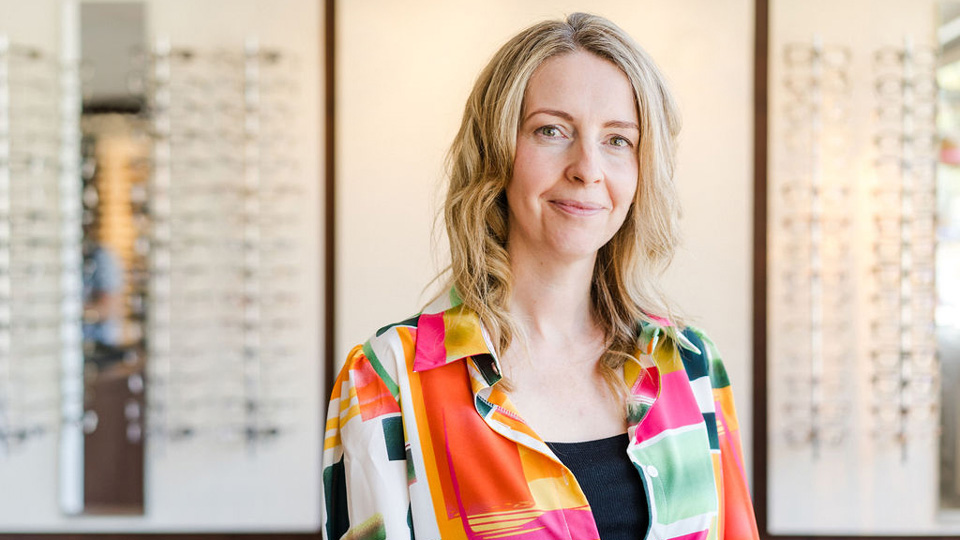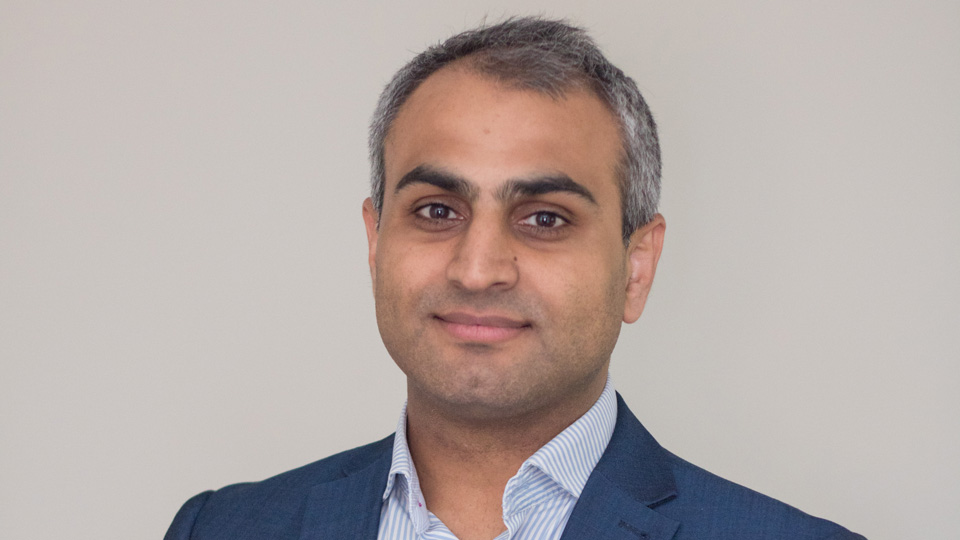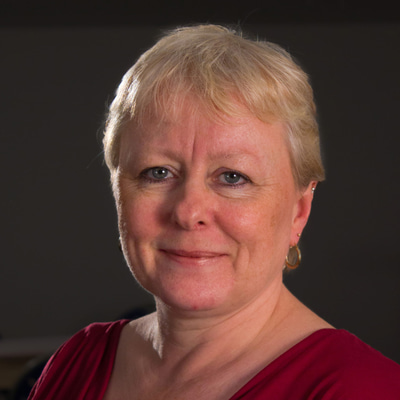- OT
- Professional support
- Health services
- Electronic referrals: new data reveals regional disparities in access
Electronic referrals: new data reveals regional disparities in access
While some areas are referring directly to secondary care through an electronic platform, others continue to rely on GP practices for onward referrals

13 July 2023
New data has revealed the extent of variation within England in the roll out of electronic referral systems enabling direct referrals between optometry and secondary care.
However, a series of Freedom of Information Act requests by Optometry Today has revealed significant variation between different regions in the referral processes followed and the level of access to electronic referral pathways. For the full responses, see the drop down table at the bottom of article.
In Greater Manchester and Essex, the majority of practices have access to an electronic referral system and are actively using it.
There are also several areas – including Frimley, North West London and Shropshire, Telford and Wrekin – where no electronic referral pathway is in place.
As the September deadline for direct referrals approaches, optometry practices in Bristol, North Somerset and South Gloucestershire were still required to send referrals to a GP practice for onward referral.
Where electronic referral systems are available, not all practices have made use of the system because of integration challenges with practice management software (PMS).
There is also a disparity between practices that offer extended services – such as minor eye conditions services (MECS) and the COVID-19 urgent eyecare service (CUES) – and those that do not.
Across the country, practices offering extended services were more likely to be able to refer directly to secondary care using an electronic referral system.
Previously the technology we had in practice wasn’t supported by the system we used for referrals
Practices in Bradford faced some initial hurdles in transferring to an electronic system when some GP practices began refusing to process paper referrals before all optometry practices had access to the system.
“They were sending the letters back saying ‘Please use the online system,’ but we didn’t have the system,” optometrist and Bradford Local Optical Committee (LOC) electronic referral system lead, Jenny Capozio, explained.
“It was quite stressful at times. We were wondering what the alternative was,” Capozio added.
An extension was negotiated with the GP practices, enabling optometry practices to continue to post referrals until they had access to the EyeV electronic referral system.
Now all practices in the Bradford area – except for four dispensing-only practices – are using EyeV for referrals.
Capozio believes that the new system will save time once initial integration challenges have been resolved.

The previous method of posting referrals to a GP practice created the risk of unnecessary delays and concerns about whether the referral had been received.
“There were a percentage of letters that didn’t get there,” Capozio said.
“The advantage with the EyeV system is that the referral automatically goes on a tracking board and shows you it has been received at the relevant location,” she explained.
Rather than printing out images that would then be scanned by a GP practice – further losing resolution – EyeV enables optometrists to upload images directly to the referral.
“You can share what you are finding. Previously the technology we had in practice wasn’t supported by the system we used for referrals,” Capozio said.

Optometrist and fellow Bradford LOC member, Stewart Mitchell, also identified the ability to share retinal images, optical coherence tomography scans and topography data as an advantage of EyeV.
“This adds value to a referral. It is possible to generate a referral directly from your PMS,” he said.
Mitchell added that the system remains a work in progress. Initially, in January, only routine referrals were accepted. This was followed by wet AMD and cataract referrals.
The AOP councillor shared that EyeV have generally been responsive to issues that have occurred.
“EyeV also runs webinars to showcase the system and to address problems,” he said.
Optometrist and AOP councillor, Dharmesh Patel, is a practice director of Dixon Optometrists in Stockport. He is also the chief executive officer of Primary Eyecare Services, which has been influential in the roll out of the Opera electronic referral system.

Patel shared that there is room for improvement in the roll out of electronic referral systems.
“For me, the focus should very much be around minimising double entry, getting feedback and having consistency across the country,” he said.
Patel observed that variation in electronic referral systems creates challenges for optometry practices that sit on the border between areas that use difference processes, as well as for locum optometrists.
Within Opera, this allows for certain mandatory fields to be completed before a referral is sent.
“It ensures that at least X, Y, Z information is there. You are reducing the chances of a referral coming to hospital with key pieces of information missing,” he said.
Of the 108,000 referrals sent through Opera in Greater Manchester, Cheshire, Merseyside and Lancashire in the past year, 16% contained attachments or images.
“You start to have more information with a referral which can only benefit patients,” Patel emphasised.

Spofforth shared that the system has now been live for over a year. During that time, there has been a 30% reduction in referrals to Southend Hospital.
The AOP chairman attributes the drop in referrals to both the roll out of an electronic system and having a single point of access where suitable referrals can be redirected to an optometry practice offering extended services.
“It is the two things combined. If you have lots of paper referrals, it is very difficult to send those back to a community provider. If it is all electronic, it is only the press of a button and those referrals can easily be redirected,” she said.
Her hope for the future is that the ability to share advice and guidance will be incorporated into the system.
“It would be great to have two-way communication with an ophthalmologist to determine if a patient actually needs referring,” Spofforth shared.
The importance of referral feedback
When Professor Bruce Evans attempts to describe the problem with referral replies at present, he asks me to step into the shoes of an alien observer.
This is a system where historically a referral letter would be sent to a GP and then relayed to the hospital, with the optometrist potentially relying on the patient to provide information about whether they had been seen and what the outcome of a hospital appointment was.
“The fact that we have a bizarre system where the reply goes to the GP who didn’t make the referral is just ridiculous,” Evans shared.
“You need to look at it with fresh eyes, and when you do, you think ‘we shouldn’t be where we are’,” he emphasised.
As a profession I would like to see us become more assertive and say, ‘We are only going to adopt the platform, if you assure us that we will receive automatic replies’
A paper published in Ophthalmic and Physiological Optics by Krystynne Harvey et al in February last year found that the referring optometrist remained unaware of the outcome of their referral in 73% of cases.
Evans believes that the implementation of electronic referral systems presents an opportunity to increase reply rates from secondary care. Evans argues that replies reduce unnecessary re-referrals and improves the quality of referrals.
“When I think about the barriers to replies, I do think there is an acceptance among our profession now that we don’t get replies. We need to change our mindset to one where we say it is not acceptable,” he shared.
“As a profession I would like to see us become more assertive and say, ‘We are only going to adopt the platform, if you assure us that we will receive automatic replies’,” Evans shared.
The roll out of electronic referrals in England
Area-by-area summary of progress on the move towards connectivity
|
NHS Integrated Care Board |
Electronic referral provision |
|
Bath and North East Somerset, Swindon and Wiltshire |
Referrals are emailed by optometrists to a referral service, where the referral is entered on the electronic referral system, triaged and sent to secondary care
|
|
Bedfordshire, Luton and Milton Keynes |
All Milton Keynes practices have access to the EyeV electronic referral platform for referral to secondary care. Within Bedfordshire and Luton, 11 out of 68 practices have access to the platform. A further 18 are being onboarded with the platform. All Bedfordshire and Luton practices can send referrals to secondary care by NHS email |
|
Birmingham and Solihull |
Optometrists who offer extended services can use Opera to refer to secondary care. Optometrists who do not offer extended services can send referrals to a GP practice for onward referral through an electronic referral system. |
|
Black Country |
An electronic referral pathway is in place for extended services (CUES, glaucoma and cataract). The ICB anticipates that a more general roll out of an eye care electronic referral service will begin at the end of 2023 |
|
Buckinghamshire, Oxfordshire and Berkshire West |
Rego is being implemented as the electronic referral system within the ICB. Practices without Rego can send referrals to secondary care by NHS email. Within Buckinghamshire, 70% of optometrists are using Rego for referrals, while 35% of Berkshire West practices are using the platform. Practices in Oxfordshire are using NHS mail for referrals, with Rego on boarding to begin from 1 July in the area |
|
Bristol, North Somerset and South Gloucestershire |
Optometrists email referrals by NHS mail or send the referral by post to GP practices where a medical secretary enters it into an electronic referral system. A secondary care optometrist triages the referral and directs it to the most appropriate pathway |
|
Cambridgeshire and Peterborough |
All optometry practices are able to access the Eyes electronic referral system. Currently 47 practices have signed up to use the system and 68 have expressed interest in doing so. Those who are not signed up to Eyes can make referrals to secondary care by email. The PharmOutcomes referral platform is used by 23 practices for extended services (MECS) |
|
Cheshire and Merseyside |
Referrals between optometry practices and secondary care are made through the Opera electronic platform. Currently, 186 of 228 practices have access to Opera |
|
Cornwall and the Isles of Scilly |
Urgent referrals and those for suspected wet age-related macular degeneration are made direct to secondary care by email. A pilot using an electronic referral system for routine referrals to secondary care is underway in three of 48 optometry practices |
|
Coventry and Warwickshire |
Optometrists can use NHS email to make a direct referral to secondary care. Practices can also send referrals to a GP for entry onto an electronic platform and onward referral. Urgent and emergency referrals can be made through an online hospital platform |
|
Derby and Derbyshire |
NHS email is used for referral from optometry practices to secondary care while Opera is used for extended services. The roll out of an electronic referral system is currently being implemented. Of 93 optometry practices, 84 have access to NHS email |
|
Devon |
All optometry practices have access to NHS email for referrals to secondary care. Seven optometry practices are involved in a pilot using an electronic referral system for referrals to ophthalmology |
|
Dorset |
All 89 optometry practices have access to Community Health and Eyecare’s electronic referral system for referral to community ophthalmology. NHS email is used for wet AMD referrals to secondary care and for conditions referred to emergency eye departments |
|
Frimley |
Opera is used in some parts of the ICB for extended services |
|
Gloucestershire |
Optometry practices use Opera for referrals to secondary care. Out of 64 practices, 53 are signed up to the platform |
|
Greater Manchester |
Optometry practices can make referrals to secondary care through Opera. Of 325 practices, 322 have access to Opera. All practices have access to NHS email |
|
Hampshire and the Isle of Wight |
Within Isle of Wight, Opera is used by 10 out of 13 practices for extended services referrals. Southampton, South West Hampshire and North Mid Hampshire have access to Optegra. Details about uptake were not available. Portsmouth and South East Hampshire do not have access to an electronic referral system |
|
Humber and North Yorkshire |
Referrals between optometry and secondary care are currently made by letter or email. There are regional plans to introduce an electronic referral system by September 2023 |
|
Kent and Medway |
An electronic referral system is accessible by all 150 optometry practices for referrals between optometry and secondary care. So far, 20 optometry practices are using the system |
| Lancashire and South Cumbria |
Optometrists use Opera to refer patients to secondary care. Across the ICB, 85% of practices are onboarded on to the system. |
|
Leicester, Leicestershire and Rutland |
Referrals between optometry and secondary care are sent by NHS email. The electronic referral system, Cinapsis, will be implemented for referrals with an anticipated roll out date of October 2023 |
|
Lincolnshire |
Optometrists refer by email to the Elective Activity Coordination Hub where the referral is triaged. The referral is then either entered into an electronic referral system and sent to secondary care, or emailed to the Community Optometrist Triage, Assessment and Treatment service. Developments are underway to introduce an electronic referral system for optometry which would replace emailed referrals |
|
Mid and South Essex |
All 120 optometry practices have access to Opera for referrals between optometry and secondary care. Currently 87 practices are live on the system |
|
Norfolk and Waveney |
Referrals are sent from optometry practices to secondary care by NHS email or post. Around half of practices have access Opera for extended services |
|
North Central London |
All practices can access the electronic referral system, Evonnect, for referrals to secondary care. Practices also have access to NHS Email. Six practices in Camden use Opera, while a further five practices are trialling the use of the NHS e-Referral System (e-RS) |
| North East and North Cumbria |
Across the ICB, there is no direct electronic pathway for routine referrals from optometry to secondary care. In County Durham: NHS email is used for direct referrals to secondary care for urgent referrals. In Newcastle Gateshead, Northumberland, North Tyneside, South Tyneside and Sunderland: Opera and the NHS electronic referral service are used for extended services. In North Cumbria: Opera and the NHS electronic referral service are used for extended services. At present, 17 practices use Opera for CUES in North Cumbria. Tees Valley: urgent referrals are made direct to secondary care by email. |
|
North West London |
There is no electronic referral pathway in place between optometry and secondary care |
|
Northamptonshire |
All optometry practices can refer to secondary care by email. The ICB has signed up to a new service that will eventually enable direct referrals from optometry practices to secondary care through an electronic referral system |
|
Nottingham and Nottinghamshire |
All optometry practices in Bassetlaw are signed up to an electronic referral system that enables direct referrals between optometry and secondary care. Optometry practices in Nottingham City, South Nottinghamshire and Mid Nottinghamshire send referrals to GP practices that input the data into an electronic system for onward referral. A planned future service will enable direct electronic referrals between optometry and secondary care in these areas |
|
Shropshire, Telford and Wrekin |
Currently there are no electronic referral pathways in place between optometry and secondary care. However, an electronic eyecare referral system has been procured and is expected to be live by September 2023 |
|
South East London |
All 65 practices that provide MECS have access to e-RS and NHS email for referrals between optometry and secondary care. No information was provided for non-MECS practices |
|
South Yorkshire |
The EyeV electronic referral system is being implemented across the area for referrals between optometry and secondary care. All Sheffield practices have access to the system, with 12 practices onboard at the beginning of June. It is anticipated that optometry practices in Barnsley and Doncaster will also have access to EyeV by October 2023. EOS is used by around half of optometry practices in Doncaster |
|
Staffordshire and Stoke-on-Trent |
Opera is used for referrals between optometry and secondary care for extended services |
|
Suffolk and North East Essex |
The Evolutio electronic referral system is in place for referrals between optometry and secondary care in Suffolk. There is no platform in place in North East Essex |
|
Surrey Heartlands |
Opera is used for referrals by optometry practices to secondary care for extended services |
|
Sussex |
Opera is used by 36 out of 49 practices in West Sussex for referrals between optometry and secondary care for extended services (cataract integrated pathway and glaucoma referral refinement pathways). An electronic cataract referral pilot in East Sussex will use Rego |
| West Yorkshire* |
All optometry practices can refer directly to secondary care using NHS mail addresses. The EyeV electronic referral system is also being rolled out across the ICB for direct referrals to secondary care. Across Calderdale and Huddersfield, 78% of practices are live on the system. Across Bradford and Airedale, 88% of practices are using the system. In July, the ICB reported that onboarding for practices in Leeds would begin in “the coming weeks,” followed by onboarding for practices in Wakefield. |
|
Source: Freedom of Information responses received by Optometry Today, June 2023. Information was not provided by: NHS Herefordshire and Worcestershire, NHS Hertfordshire and West Essex, NHS North East London *This article was updated on 28 July 2023 after further information was provided by NHS West Yorkshire |
|
Advertisement


Comments (3)
You must be logged in to join the discussion. Log in
Anonymous20 July 2023
There also needs to be funding to adopt electronic referrals as the grossly underfunded GOS fee does not reflect the technology and time needed to adopt new practices/change of working (you would not get a GP to change a way of working without proper funding).
The platforms used for electronic referrals need greater scrutiny as the platform used in Bradford has poor feedback with tickets raised and tracking of referrals which seem blocked or look as they have not been triaged. There is also poor understanding by the platforms when there are multiple practices/practitioners and viewing referral info with GDPR issues going forward should there be a change of practitioner or practice owner.
LOCSU needs to provide more guidance and scrutiny of these platforms to give LOCs choice over what which platform is best suited to the area.
Report Like 238
Anonymous13 July 2023
I like this comment from Bruce; "As a profession I would like to see us become more assertive and say, ‘We are only going to adopt the platform, if you assure us that we will receive automatic replies’
We also need to be more assertive about the costs, just because we have computers in practice currently doe not mean there is no cost, as these need routinely replacing and its our private patients that are paying for this currently, when GPs get IT grants. Plus double typing is an issue, it takes extra time. During the tender / trial process we were promised software that would link with our optometric PMS, yet the NHS has spent all the cash on connections to the HES software and yet when developed we will have to pay for our own, like the PMS links with PCSE.
I was forced on to EERS last week when the HES stopped accepting NHS.net referrals.
Report Like 283
3430113 July 2023
This is a useful and interesting article for LOCs to aid comparisons. But there are a lot of England missed out if this. Nowhere in the North East and North Cumbria is mentioned. There is only direct referrals for commissioned pathways via opera in the NENC. The majority of referrals go via the GP though some are now sent via nhs mail rather than paper. The availability of commissioned funded nhs pathways is not consistent across the region despite the hard work of the LOCs to promote consistency of service. There is concern about the lack of funding for practices to support moving to electronic referrals when they finally arrive. Especially if the platform is plagued with problems like the PCSE portal.
Report Like 206